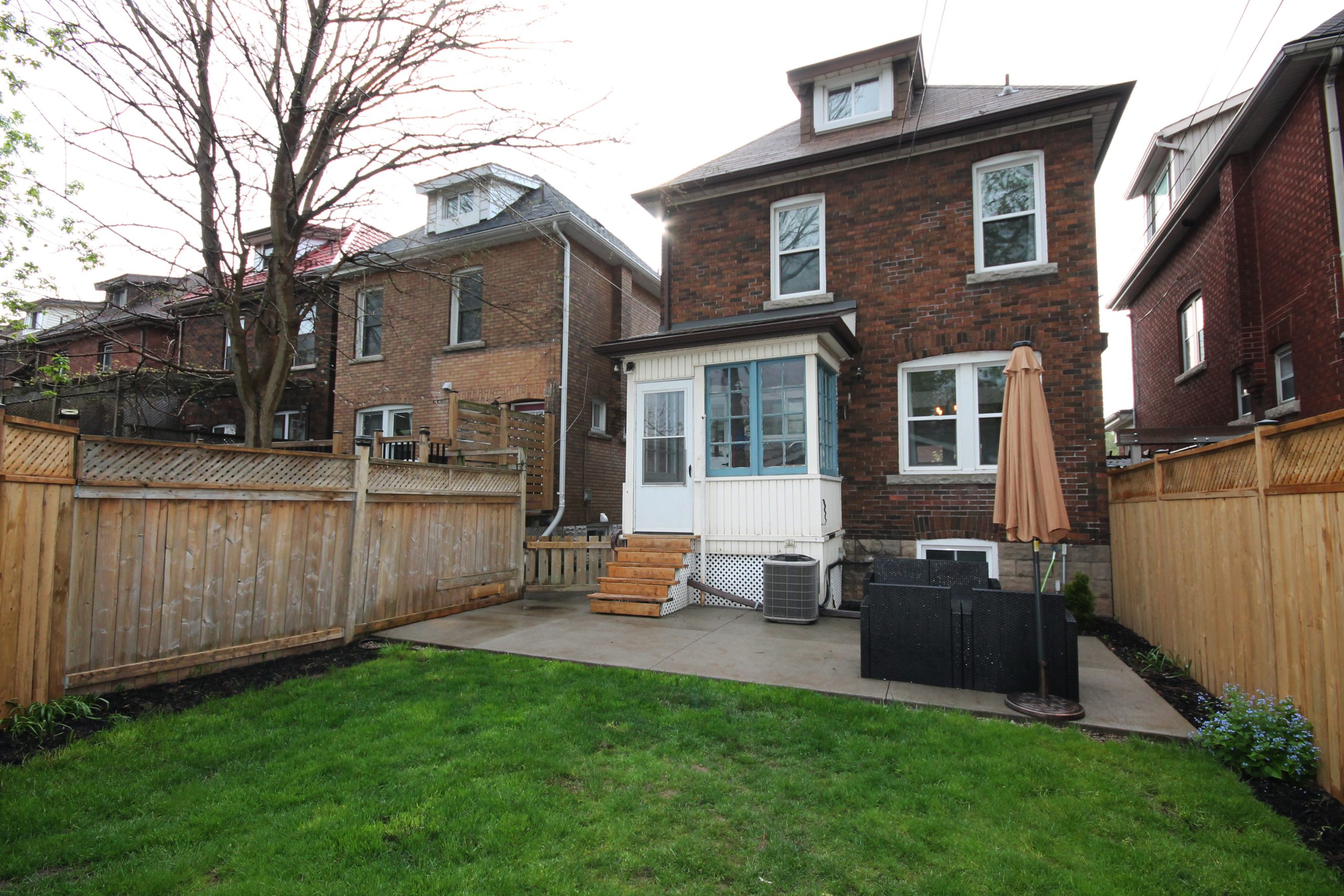The Ultimate Ontario Guide to Selling and Buying Your Home at the Same Time
Making the decision to both sell your current home and buy a new one is one of the most exciting—and challenging—steps in your life. In Ontario’s competitive real estate market, timing is everything. With proper planning, expert advice, and the right financing tools, you can avoid the dreaded scenario of owning two homes at once and make your transition as seamless as possible.
This guide will walk you through every stage of the process, share insider tips from experienced real estate professionals in Ontario, and explain financing options like bridge loans and sales contingencies. Whether you’re upsizing, downsizing, or relocating, you’ll learn how to coordinate closings, prepare your property, and negotiate with confidence. Let’s dive into the world of simultaneous selling and buying—stress-free!
1. Understanding the Process: The Big Picture
Why Sell and Buy at the Same Time?
For many Ontario homeowners, the ideal scenario is to sell your current home and purchase your next property in one seamless move. By doing so, you avoid the costly overlap of paying two mortgages and the inconvenience of temporary housing. Whether you’re moving to a better neighborhood, upgrading to a larger home, or simply looking for a change, synchronizing these transactions allows you to preserve your financial stability and keep your moving stress to a minimum.
The Key Stages
Before you take action, it’s important to understand the typical steps involved in buying and selling simultaneously:
- Pre-Planning and Financial Assessment: Analyze your financial situation, evaluate your current home’s equity, and get pre-approved for a mortgage.
- Home Preparation: Stage, declutter, and make necessary repairs to maximize your home’s market value.
- Listing Your Home: Price it competitively and work with a trusted real estate agent.
- House Hunting: Research potential new homes and coordinate your search with market timing.
- Negotiation and Contingencies: Craft offers that protect you with contingencies tied to the sale of your current home.
- Closing and Moving: Align closing dates, secure temporary solutions if needed, and finalize both transactions.
Understanding these stages allows you to organize your efforts and develop a solid plan. In the following sections, we’ll explore each stage in detail.
2. Pre-Planning: Assess Your Financial Situation
Evaluate Your Home Equity and Savings
One of the first things you need to do is determine how much equity you have in your current home. In Ontario, where home prices can vary widely by region—from the GTA to smaller communities—the amount of equity available will directly affect your down payment for your next home. Ask yourself:
- How much did I pay for my home, and what is its current market value?
- Do I have enough savings to cover any shortfalls?
- Are there any renovations or improvements I can make to boost its value?
Mortgage Pre-Approval: Know Your Budget
Before you even start looking for a new home, get pre-approved for a mortgage. This step not only shows sellers that you are a serious buyer but also provides you with a clear picture of how much you can afford. A mortgage pre-approval takes into account your income, credit score, debt-to-income ratio, and the equity from your current property sale.
Insider Tip:
Many Ontario real estate professionals recommend working with a mortgage broker who understands the local market. They can help you explore options such as bridge loans or home equity lines of credit (HELOCs) if there’s a timing gap between your sale and purchase.
Create a Detailed Budget and Contingency Plan
Selling and buying at the same time often involves unexpected expenses—from legal fees and closing costs to additional moving expenses if the timing isn’t perfect. Prepare a detailed budget that includes:
- Estimated closing costs for both transactions.
- Moving expenses (hiring movers, packing supplies, storage fees).
- Emergency funds for temporary housing if there’s a gap between closings.
- Renovation or repair costs that might increase your home’s appeal.
Insider Tip:
It’s wise to set aside a buffer of 10-15% of your expected costs. This extra cushion can help you navigate any unforeseen expenses without derailing your plans.

3. Selling Your Current Home: Preparing for a Successful Sale
Staging and Decluttering
First impressions are crucial in real estate. Staging your home can significantly affect its perceived value and attract more potential buyers. Here are some tips:
- Declutter: Remove personal items and excess furniture to create a blank canvas where buyers can envision their future home.
- Deep Cleaning: Ensure every nook and cranny is spotless. A clean home suggests that the property has been well cared for.
- Repairs and Updates: Fix minor issues such as leaky faucets, cracked tiles, or chipped paint. Consider inexpensive upgrades like new cabinet hardware or a fresh coat of neutral paint.
- Professional Staging: If possible, hire a professional stager. Research shows that staged homes often sell faster and at a higher price.
Insider Tip:
Many Ontario agents recommend the “less is more” approach. A minimalist, neutral look appeals to a broader audience and makes your home appear more spacious and inviting.
Pricing Your Home Competitively
Determining the right listing price is both an art and a science. You want to attract buyers quickly while maximizing your return.
- Market Analysis: Your real estate agent should provide you with a comparative market analysis (CMA) that includes recent sales of similar properties in your neighborhood.
- Strategic Pricing: Price your home slightly below market value to generate multiple offers, or at a competitive price that reflects its true value. This strategy can create a bidding war in a seller’s market.
- Time on Market: Homes that sit on the market for too long can develop a stigma. By pricing competitively, you can encourage a quick sale and move forward with your new home purchase.
Insider Tip:
Ask your agent if a “price band” strategy is appropriate. This approach involves setting a price range rather than a fixed price, allowing flexibility in negotiations.
Marketing Your Home Effectively
In today’s digital age, a robust marketing strategy is essential. Work with your agent to:
- Professional Photography: High-quality photos and virtual tours can make your home stand out online.
- Social Media Marketing: Leverage platforms such as Facebook, Instagram, and LinkedIn to reach a broader audience.
- Multiple Listing Service (MLS): Ensure your home is listed on the MLS and other popular real estate websites.
- Open Houses and Private Showings: Arrange both open houses and private showings to accommodate different buyers’ schedules.
Insider Tip:
Consider investing in a short video tour. In many cases, potential buyers in Ontario start their home search online, and a video tour can provide an immersive preview of your property.
4. Buying Your New Home: How to Secure the Right Property
Research the Local Market
Ontario is diverse—what works in Toronto might be different from what’s ideal in Ottawa or smaller communities like Guelph or Kingston. Research the local market trends in the area where you want to buy:
- Inventory Levels: Is it a buyer’s or a seller’s market? This will influence your negotiation power.
- Pricing Trends: Know the average sale prices, and monitor fluctuations over the past few months.
- Neighborhood Dynamics: Look at factors such as proximity to schools, transit, amenities, and future development plans.
Insider Tip:
Work with a local agent who specializes in the area where you want to buy. Their insights on neighborhood trends and future developments can be invaluable in making an informed decision.
Viewing Homes and Making an Offer
Once you’ve narrowed down your options, it’s time to start visiting properties. With busy schedules and a competitive market, consider these strategies:
- Virtual Tours: Many listings now offer virtual tours. These can save you time, especially if you’re exploring properties in multiple neighborhoods.
- In-Person Visits: Even if you start with virtual tours, nothing beats an in-person visit. Pay attention to the condition of the home, any hidden issues, and how it fits your lifestyle.
- Offer Strategy: When making an offer, ensure it aligns with your pre-approved mortgage amount. If you plan to include a home sale contingency, be aware that in a hot market, sellers might favor offers without contingencies.
Insider Tip:
If you’re in a competitive market, consider a “gap waiver” where you agree to waive some contingencies (after thorough due diligence) to make your offer more attractive. Your agent can advise whether this is suitable for your situation.
Financing Options: Bridge Loans and Contingencies
Timing is everything when you’re selling and buying at the same time. One major challenge is ensuring that the sale of your current home aligns with the purchase of your new one. Here are a few financing options to help manage timing gaps:
Bridge Loans
A bridge loan is a short-term loan designed to “bridge” the gap between the sale of your current home and the purchase of your new one. This can prevent you from having to own two properties simultaneously.
- How It Works: The bridge loan is secured against your current home’s equity and is repaid once your home sells.
- Pros and Cons: While bridge loans can provide the funds you need for a down payment or to cover temporary housing expenses, they often come with higher interest rates and fees. Use them only if you have strong equity and a clear plan to sell quickly.
Insider Tip:
Discuss bridge loan options with your mortgage broker early in the process. In Ontario’s fluctuating market, having a backup financing option can provide peace of mind.
Home Sale Contingency Offers
When you make an offer on your new home, you can include a home sale contingency clause. This means your offer is conditional on the sale of your current home.
- Advantages: This protects you from the financial burden of carrying two mortgages if your home doesn’t sell quickly.
- Challenges: In a seller’s market, contingent offers can be less attractive to sellers, so you may need to be flexible on terms or consider other options if you’re competing with cash buyers.
Insider Tip:
Negotiate with your agent to craft a contingency that is as attractive as possible—for example, by offering a shorter contingency period or a higher earnest money deposit.
Using a Home Equity Line of Credit (HELOC)
If you have significant equity in your current home, a HELOC might be another way to finance the down payment on your new home while waiting for the sale to close.
- How It Works: A HELOC allows you to borrow against your home’s equity as needed. It is a revolving credit facility, so you only pay interest on the funds you use.
- Advantages and Risks: HELOCs offer flexibility but typically have variable interest rates. Make sure you fully understand the repayment terms and risks.
5. Coordinating Closing Dates: Timing Is Everything
Aligning Your Sales and Purchase Closings
One of the biggest challenges is coordinating the closing dates of your home sale and your home purchase. Ideally, you want the transactions to occur on the same day—or with as little gap as possible—to avoid having to cover two mortgage payments.
- Negotiate with Buyers and Sellers: Work closely with both your selling and buying agents to negotiate a timeline that works for everyone. Explain your situation clearly and be prepared to compromise.
- Rent-Back Agreements: In some cases, if your current home sells before you’ve purchased your new home, you might negotiate a rent-back agreement with the buyer. This allows you to remain in your home for a short period after closing, giving you more time to secure your new property.
- Temporary Housing: Conversely, if you buy first and your current home hasn’t sold yet, plan for temporary housing. While this is not ideal, having a backup plan can reduce stress.
Insider Tip:
Many experienced Ontario agents recommend that you aim for a closing window of 30–45 days between transactions. This gap provides a buffer for any unexpected delays while keeping the risk of dual mortgage payments low.
The Role of Your Real Estate Team
An experienced team can make all the difference in coordinating closing dates. This team should include:
- A Knowledgeable Realtor: Choose an agent who handles both selling and buying, if possible, so they fully understand your timeline and needs.
- A Reliable Mortgage Broker: They can help secure the right financing options (bridge loans, HELOCs, etc.) and ensure that your mortgage pre-approval is up-to-date.
- A Real Estate Lawyer: In Ontario, legal details are critical. A lawyer can review contracts, help negotiate contingencies, and ensure that closing documents are in order.
Insider Tip:
It’s a great idea to have regular check-ins with your team throughout the process. Frequent communication helps ensure that everyone is on the same page and that any issues are addressed immediately.
6. Insider Tips from Ontario Real Estate Professionals
Throughout this process, the insights and experiences of local experts are invaluable. Here are some insider tips from seasoned Ontario real estate professionals:
Tip 1: “Sell First, Buy Second” Is Often the Safest Bet
Many agents in Ontario advise that if you’re risk-averse, it might be best to sell your current home before buying your new one. This approach eliminates the stress of carrying two mortgages and gives you a clear picture of your financial situation. However, it does require temporary housing solutions.
“We’ve seen many clients who try to buy first only to find themselves financially stretched,” says Karen L., a Toronto-based agent with over 20 years’ experience. “Selling first gives you the proceeds you need for a down payment and can even position you for a stronger negotiating position when buying.”
Karen recommends carefully timing your move and exploring short-term rental options if necessary.
Tip 2: Consider a Bridge Loan—But Use It Sparingly
Bridge loans can be a powerful tool, but they are not without risks. They often come with higher interest rates and fees, so it’s crucial to ensure that you have sufficient equity in your current home and a solid plan to sell quickly.
“A bridge loan is best used as a safety net rather than a long-term solution,” advises Michael P., a mortgage specialist in Ottawa. “If you have strong equity and the market is favorable, it can help you secure your next home without disruption.”
Michael stresses that thorough pre-approval and a contingency plan are essential when considering this option.
Tip 3: Craft a Strong Offer on Your New Home
When you’re ready to make an offer on your new property, make sure it’s as competitive as possible—even if it means reducing some contingencies.
“In a competitive market like Toronto or Mississauga, buyers need to present offers that are attractive to sellers,” notes David R., a seasoned real estate agent. “Sometimes that means offering a flexible closing date or a higher earnest money deposit to show your commitment.”
David advises that if you must include a home sale contingency, work with your agent to shorten the contingency period as much as possible.
Tip 4: Don’t Underestimate the Importance of Home Staging
Presentation matters more than ever in today’s digital world. Professional staging not only helps buyers visualize themselves in the space but can also lead to quicker sales and higher offers.
“Investing in professional staging is one of the best ways to ensure you get the best possible price for your home,” says Susan T., a real estate consultant based in Hamilton. “It’s not just about making your home look pretty—it’s about creating an emotional connection with potential buyers.”
Susan often recommends a “light and neutral” approach to staging that appeals to the broadest audience.
Tip 5: Stay Flexible and Communicate Openly
Flexibility is key. Market conditions can change rapidly, and being able to adjust your timeline or strategy is critical.
“Real estate is as much about relationships as it is about numbers,” says Mark F., an agent who operates in several Ontario markets. “Keep open lines of communication with your agent, lender, and lawyer. If one aspect of the transaction starts to slip, you can often adjust the other parts to compensate.”
Mark’s advice is to always have a “Plan B” ready—whether it’s a temporary rental or an alternate financing option.

7. Common Pitfalls and How to Avoid Them
Even with the best planning, some common mistakes can derail your efforts. Here’s what to watch out for:
Underestimating the Time Frame
Many buyers and sellers assume that everything will happen quickly. In reality, delays are common—from appraisal issues to negotiation hiccups.
- Solution: Always build in a buffer of extra weeks between your expected sale and purchase dates.
- Insider Insight: “Never assume a home will sell in 30 days,” advises Karen L. “Plan for at least 45 to 60 days to be safe.”
Overpricing Your Home
Setting the wrong price can lead to your home lingering on the market, which in turn can hurt your negotiating power when buying a new property.
- Solution: Use a thorough comparative market analysis (CMA) to set a realistic price.
- Insider Insight: “Price it right from the beginning,” emphasizes David R. “If your home sits too long, buyers might wonder if there’s something wrong with it.”
Failing to Secure Financing in Advance
Waiting too long to get mortgage pre-approval can leave you scrambling when you find the right home.
- Solution: Get pre-approved as early as possible and update your pre-approval if necessary.
- Insider Insight: Michael P. recommends, “Get your finances in order well before you start house hunting. This way, you know exactly what you can afford.”
Not Planning for Dual Expenses
Owning two homes—even temporarily—can strain your budget.
- Solution: Prepare for overlapping costs by setting aside extra funds or exploring financing options like bridge loans.
- Insider Insight: “Always have a contingency fund,” says Mark F. “Unexpected expenses will arise, so be prepared.”
Neglecting Legal and Contractual Details
Real estate contracts can be complex, and missing a clause or contingency can have serious repercussions.
- Solution: Work with an experienced real estate lawyer who understands Ontario’s laws and can review all documents thoroughly.
- Insider Insight: “Don’t skip on legal advice,” Susan T. cautions. “The cost of a good lawyer is nothing compared to the potential pitfalls of a poorly drafted contract.”
8. Legal Considerations and Paperwork
In Ontario, real estate transactions involve a fair amount of legal documentation. From listing agreements to purchase contracts and mortgage paperwork, staying organized is key.
Key Documents You’ll Need
- Listing Agreement: A contract between you and your agent outlining the terms of your home sale.
- Purchase Agreement: The contract that details the terms of your home purchase, including contingencies.
- Mortgage Documents: All paperwork related to your mortgage pre-approval, bridge loan (if applicable), and final financing.
- Inspection Reports: Essential for both your current home’s sale and the condition of your new home.
- Appraisal and Comparative Market Analysis: Documents that help justify your listing price and the offer price on your new home.
The Role of Your Real Estate Lawyer
A lawyer can help you review contracts, ensure that contingencies are properly worded, and protect your interests throughout the process.
- Tip: Always have a lawyer review any contractual documents before you sign them.
- Insider Insight: “Even if you think you understand the fine print, having a lawyer’s expert opinion can save you from costly mistakes,” advises Mark F.
Staying Organized with Documentation
Keep both physical and digital copies of every document related to your transactions. Create a folder (or a secure cloud-based folder) for easy access and backup.
- Tip: Develop a checklist with all required documents and deadlines, and share it with your agent and lawyer for added accountability.
9. Moving Logistics: Making the Transition Smooth
Once both transactions are set in motion, the next hurdle is managing your move.
Coordinating Your Move
With two transactions in play, timing is everything. Ensure that your moving plans align with the closing dates of both the sale and purchase.
- Schedule Your Movers: Book professional movers early, especially during peak seasons.
- Plan for Temporary Housing: If there’s a gap between closings, have a plan for temporary accommodation—be it short-term rentals or staying with family.
- Pack Strategically: Begin packing well in advance. Label boxes clearly, and create an inventory to avoid confusion during the move.
Hiring Professionals
Consider hiring professional organizers and movers to help you manage the physical move. Their expertise can reduce stress and ensure that nothing gets lost in the shuffle.
- Insider Insight: “A professional moving service can save you time and heartache,” says Susan T. “They have the experience to deal with tight deadlines and complex logistics.”
Dealing with Emotional Stress
Moving is not just a financial and logistical challenge—it’s also an emotional one.
- Tip: Set aside time for yourself during the move. Whether it’s a quiet evening, a workout, or a coffee break with a friend, small moments of self-care can help reduce overall stress.
- Insider Insight: “Don’t underestimate the emotional toll of moving,” Karen L. advises. “It’s okay to ask for help—from friends, family, or even professional counselors if needed.”
10. Insider Success Stories: Real Ontario Experiences
To bring these strategies to life, here are a couple of real-world examples from Ontario professionals and clients who successfully navigated buying and selling simultaneously.
Case Study 1: Upsizing in the GTA
When the Smith family in Toronto decided they needed more space for their growing family, they faced the daunting task of selling their current three-bedroom home while purchasing a larger four-bedroom property. Their trusted agent, Lisa M., guided them through the process:
- Step 1: The family started with a thorough financial review and got pre-approved for a mortgage on their new home.
- Step 2: Lisa staged their current home and set a competitive price based on a recent CMA.
- Step 3: Using a home sale contingency clause in the offer on the new property, they ensured that the purchase was protected until their home sold.
- Step 4: When offers started coming in, Lisa advised them to accept a slightly lower offer than expected to avoid prolonged market exposure.
- Step 5: They negotiated a rent-back agreement, allowing the buyers to move in while the Smiths secured their new home.
The result? The Smiths avoided the financial strain of owning two homes at once and smoothly transitioned into a larger, more suitable property.
Case Study 2: Downsizing in Ottawa
John and Margaret, a retired couple in Ottawa, wanted to downsize and simplify their lives. They had owned their home for 30 years but found that maintaining a large property was no longer necessary. Their agent, Robert K., helped them:
- Step 1: Robert conducted an in-depth market analysis and suggested a strategic price to attract buyers quickly.
- Step 2: He recommended minor renovations and professional staging to enhance the appeal of their home.
- Step 3: When making an offer on a new, smaller condo, John and Margaret included a contingency based on the sale of their current home.
- Step 4: To bridge any timing gaps, Robert arranged for a short-term bridge loan which they repaid immediately after their home sold.
In the end, John and Margaret sold their home within 45 days and purchased a cozy condo that met all their needs—without the stress of juggling dual properties.

11. Final Thoughts: Planning, Patience, and Professional Guidance
The Importance of Preparation
Whether you decide to sell first, buy first, or try to coordinate both simultaneously, thorough preparation is your best defense against unexpected challenges. By assessing your financial situation, researching the market, and working with a team of experienced professionals, you set the stage for success.
Patience Is Key
Real estate transactions rarely go perfectly according to plan. There will be delays, unexpected expenses, and moments of uncertainty. Maintaining a flexible mindset and being prepared to adjust your plans can make all the difference.
Leverage Local Expertise
Ontario’s real estate market is diverse and dynamic. Working with professionals who have local knowledge—from agents and mortgage brokers to lawyers—can help you navigate the complexities of your specific market. They offer insights that can save you money, reduce stress, and ensure that your transactions are completed smoothly.
Embrace a Stress-Free Mindset
Finally, remember that while the process can be stressful, it is also an opportunity for growth and a fresh start. Focus on the benefits of moving into a home that better suits your lifestyle and needs. With careful planning, clear communication, and expert guidance, you can turn this challenge into an exciting new chapter in your life.
Conclusion
Selling your home and buying a new one at the same time in Ontario is a complex but manageable process. By following these strategic steps—assessing your finances, preparing your home for sale, researching your new market, coordinating closing dates, and leveraging insider tips from local experts—you can avoid the pitfalls of owning two homes and transition smoothly to your next chapter.
Remember:
- Plan ahead: Create a detailed financial and logistical plan that includes contingencies and a buffer for unexpected costs.
- Stay informed: Work with professionals who understand the local market trends and can provide timely advice.
- Be flexible: Expect the unexpected and remain adaptable throughout the process.
- Communicate: Keep open lines of communication with your real estate team, ensuring that every stage of the process is coordinated and transparent.
With the right approach, you’ll not only sell your current home at a competitive price but also secure your new property without the stress and financial strain of juggling two mortgages. Whether you’re upsizing for a growing family or downsizing for a simpler life, the strategies outlined in this guide empower you to take control of your real estate journey.
Embarking on this journey can be both exciting and nerve-wracking. The key is to remain focused on your end goal—a new home that perfectly fits your lifestyle—and to trust the process. By working with a dedicated team of professionals and using the tools and strategies discussed here, you can make your dream of a seamless transition a reality.
Thank you for reading our ultimate Ontario guide on how to sell and buy a home at the same time. We hope these insider tips and strategies have provided you with the clarity and confidence you need to take the next step in your real estate journey. Happy moving!






















